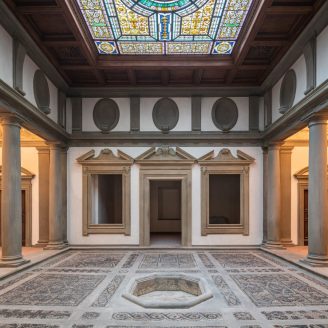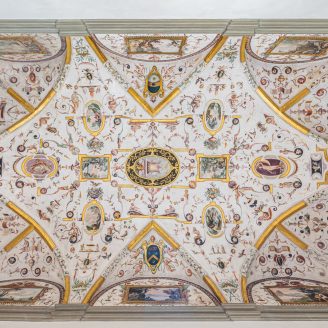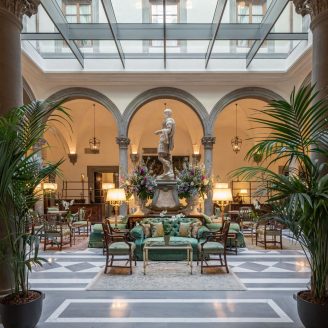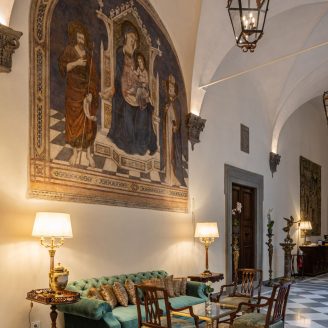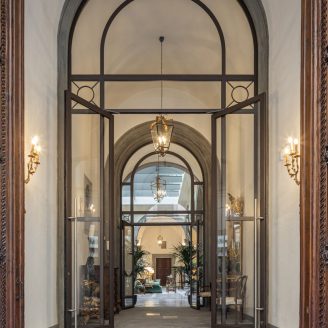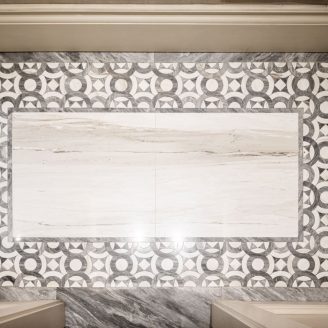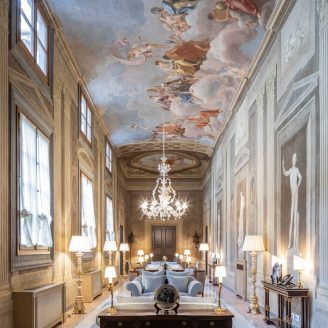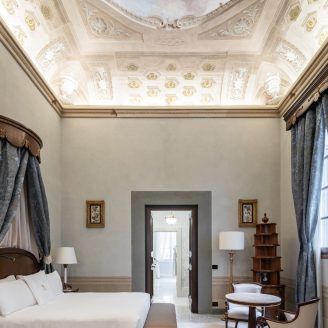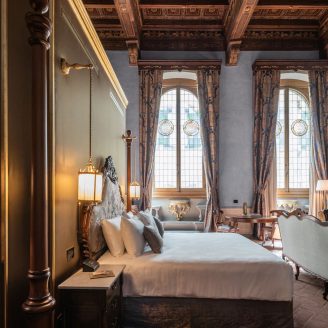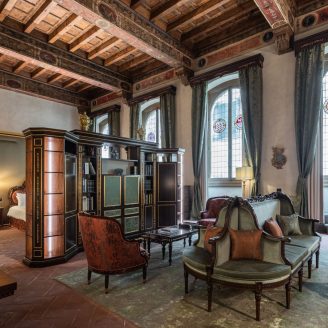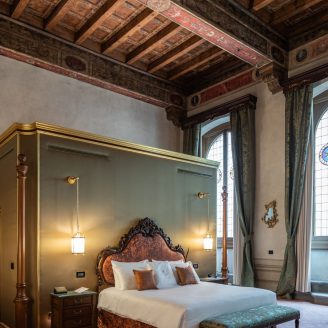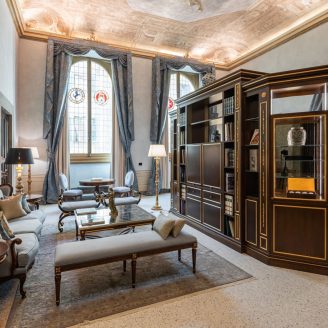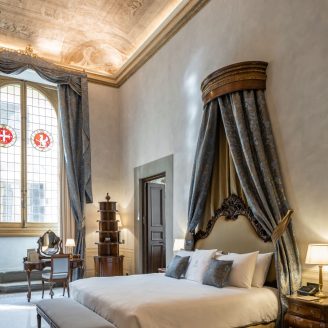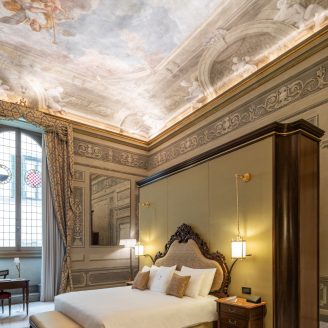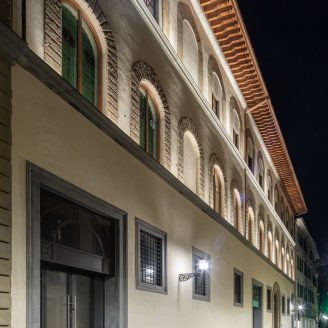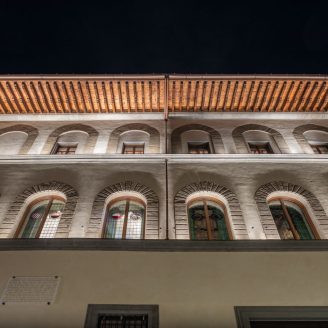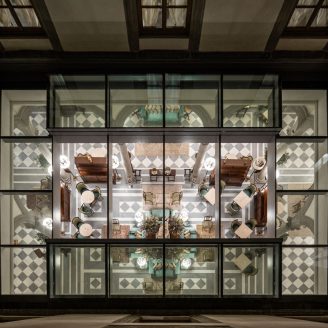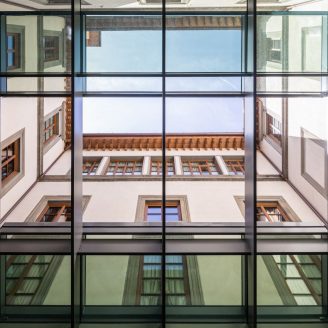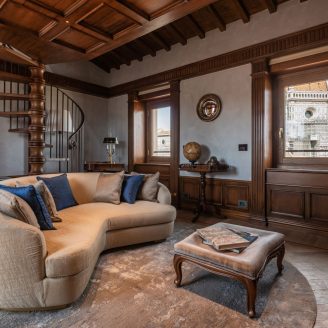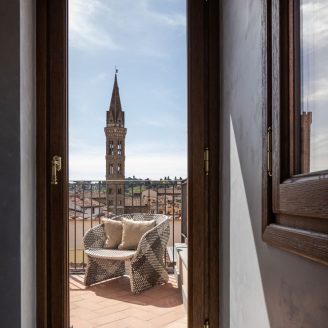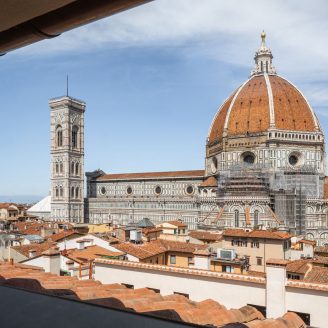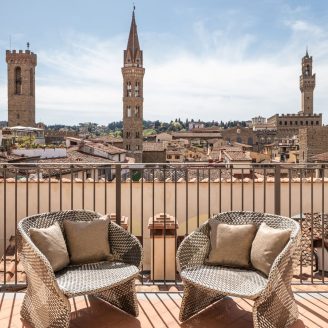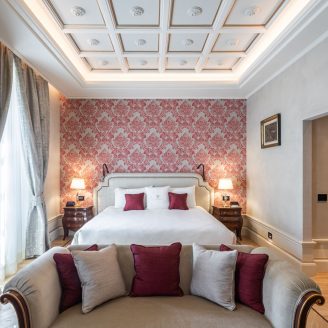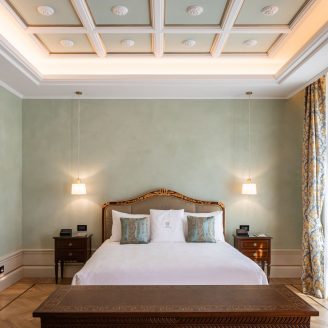Near the Duomo in Florence, Palazzo Portinari Salviati, a symbol of history, art and architecture of the city of Florence, has been reopened thanks to a program of restoration and a painstaking project of architectural and interior design, carried out by the Milan-based studio Spagnulo & Partners.
Built by the Portinari family, which gave birth to Beatrice, the muse of Dante Alighieri, the palace was acquired by Jacopo Salviati, husband of Lucrezia de’ Medici, in 1456. He expanded it and modified it in its present image, as a magnificent specimen of Florentine Renaissance architecture. Amidst courtyards and halls, frescoed ceilings and marble floors, some of the great personalities of the city lived and visited.
They have served as inspiration for the interior design by Spagnulo & Partners, implemented to convert this monument into a historic property managed by LDC Group, containing 13 suites, 25 apartments, the restaurant of an award-winning chef and a spa.
With the precise aim of conserving heritage and the many stories connected with the building, the studio Spagnulo & Partners has worked closely with the master restorers of Faberestauro, in charge of the conservation of the frescoes and exceptional works of art inside the Palazzo. The restoration has been carried out under the aegis of the Office of Archaeology, Fine -Arts and Landscape of the metropolitan city of Florence and the provinces of Pistoia and Prato.
From the entrance on Via del Corso, one reaches the Cosimo I Courtyard, which takes its name from the original statue of Cosimo I de’ Medici dressed as a Roman emperor at the center of the space. Furnished with fine period pieces, the courtyard has natural lighting thanks to a glass and steel skylight that can be opened or closed, offering maximum flexibility of use throughout the year. The checked marble flooring, alternating gray Bardiglio and white Carrara marble, is based on the floors seen in the 13th-century fresco of the Madonna and Child, on view in the portico of the courtyard.
Next comes the Emperor’s Courtyard, today hosting the new restaurant by Michelin-star chef Vito Mollica “Chic Nonna”, thus named due to the oval niches that once displayed busts of Roman emperors. In addition, the environment is enhanced by the precious cycle of frescos made by Alessandro Allori (also author of the frescoes in the nearby Salviati Chapel) and the extraordinary frieze of the Batrachomyomachia.
At the piano nobile one reaches the Galleria, where the frescoes have been completely restored. Those on the walls, made by Tommaso Gherardini in 1783, have an architectural approach that reinforces the nave structure of the gallery in an interesting way. The flooring in the gallery, like that of some of the suites on the same level, is in seminato, in a clear reference to the historical tradition typical of Florentine palaces, alternating white Carrara, gray Bardiglio, red Verona and yellow Siena marble, in keeping with the tradition of the Cinquecento.
The five historical suites on the piano nobile, facing Via del Corso, stand out for large windows decorated with the crests of the historic Renaissance guilds. The Master Suite Francesco I De’ Medici and the Dante Alighieri Suite are enhanced by carefully restored Renaissance details, including fireplaces in pietra serena, floors in authentic Tuscan cotto and high coffered ceilings, which in the Francesco I De’ Medici Suite have particular historical importance, since they were made in the 1400s by the Portinari family, bearing its coat of arms.
The same level also contains three frescoed suites, named after Maria de’ Medici, Frederik IV of Denmark and Beatrice Portinari, whose walls and ceilings has been painted by Tommaso Gherardini between 1783 and 1784.
The upper levels offer other suites of the historic palace, and the apartments, featuring Italian herringbone wood floors, paneled ceilings and walls in marmorino, a very old technique involving finishing with Marseille soap. Great attention to detail can be seen in the multicolored marble ‘carpets,’ freely based on the complexity and variety of those of the Baptistery of Florence.
At the upper level visitors can reach the suite dedicated to Galileo Galilei, featuring wood paneling based on the studies of the great 15th-century thinkers, and furnishings that reference the world of astronomy. This suit offers a 360° view of the city, from the dome of the Baptistery to the tower of Palazzo della Signoria.


